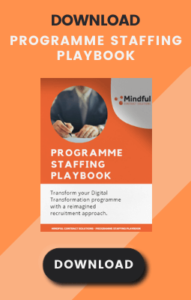Should you rule out inside-IR35 jobs?
With the upcoming changes to off-payroll legislation, if off-payroll working rules apply, your wages will be subject to tax and National Insurance contributions.
Therefore, it would make sense to suggest that inside-IR35 jobs should be avoided at all costs.
Or should they…?
We argue that in a weak labour market, that is increasingly beset by problems, inside-IR35 jobs shouldn’t immediately be ruled out by contractors.
The IR35 background
Contractors are working in an increasingly uncertain and complex environment. This has made it more difficult to find an outside-IR35 job.
In this section we explore 3 key factors that have impacted the availability of outside-IR35 jobs and the consequences of each.
1) The Impact of Covid-19
Due to the impact of Covid-19, unemployment is at a record high in the UK.
The most recent unemployment rate – for September to November – was 5%, according to the Office for National Statistics (ONS).
That is an increase of 0.6% over the previous three months, and means that 1.72 million people were unemployed.
What is the consequence?
The pool of outside-IR35 opportunities has been reduced and post April 2021, UK’s on-demand talent pool could cease to exist.
Research from Be Digital UK found that 40% of businesses are considering phasing out contractors once IR35 legislation goes live.
However, we argue that this is bad for the UK economy as contractors allow companies to get the skills they need, when they need them.
2) Off-Payroll Legislation
From 6 April 2021, all public sector clients and medium or large-sized private sector clients will be responsible for deciding your employment status. This is because HMRC believes that many contractors are incorrectly describing their employment status as ‘self-employed’.
The government clearly view the IR35 rollout as an easy and legal way to increase tax revenues, yet it penalises contractors who don’t receive the benefits that employees do.
What is the consequence?
More employers are opening up to the idea of being able to achieve flexibility through conventional permanent jobs and umbrella-company contractors.
This suits hirers as they can engage individuals as workers or employees in order to avoid having to assess their status.
If you are directed towards an umbrella company you must prove that you are not employee. A good indicator that you are not employee is having your company own website and business e-mail address.
3) Unfair Dismissal Claims
There is an increasingly high limitation period for unfair dismissal claims.
Historically it was relatively easy to make a claim, yet you now need to have been continuously employed with the same employer for at least 2 years.
This means employers have fewer liabilities in law to employees they choose to let go within the limitation period.
What is the consequence?
The one thing employers like about engaging contractors is the flexibility of letting contractors go once they aren’t needed.
However, with relaxed employment laws within first two years of an employee’s employment, employers can achieve a flexible labour pool without serious consideration of the lagging employment liabilities that come with letting people go.
Effectively, employers can legitimately hire employees on a commitment to keep them long term, but let them go if conditions change.
Mindful has been a thought leader in the IR35 space – some of our thinking has been published in Personnel Today, Accountancy Age and People Management.
Inside-IR35 – The 4 Steps You Should Take
If there is an inside-IR35 job offer on the table, don’t dismiss it right away. Follow these four steps to understand if an inside-IR35 role is right for you.
Step 1. Work on offer
Firstly, it is important to take into account the nature of work on offer.
If it is aligned to your skills and interests, then you should explore it further and not just dismiss it off-hand because of its IR35 status. Then, consider step 2.
Step 2. Control of work
You should understand if the hiring manager is intending to take a greater control over your work. Do they want to make you part and parcel of the employer’s organisation? Or are they handicapped by their internal compliance / controls in affording any contractor an outside-IR35 offer?
Self-employed individuals enjoy the freedom that comes with contracting and may desist extra control. Therefore, you may assume an inside-IR35 offer as the intention of the hiring manager to exercise control.
However, this is not always the case. They may only have positioned the role as inside-IR35 because of internal policies. We would advise you to test out this assumption in the interview process. Take 5 minutes at the end of the interview to ask the hiring manager about their working style and if they are likely to administer delegation.
In our blog, How to Transition your Organisation to an Inside IR35 Workforce, we explore how organisations can move to a stricter regime where a large proportion of workers are deemed inside IR35.
Step 3. Save on taxes
Have you explored the different ways you can save on taxes even when operating under PAYE? If not, you should familiarise yourself with tax-saving vehicles provided by the Government free of charge.
For example, the Venture Capital Trust (VCT) and Enterprise Investment Scheme (EIS) offer 30% tax relief, while the Seed Enterprise Investment Scheme (SEIS) offers 50% tax relief. Furthermore, pension contributions are also a very attractive way of mitigating tax impact.
Step 4. Administrative hassle
Ask yourself this question: are you desisting from taking the inside-IR35 offer because of the administrative hassle? Contractors can feel analysis-paralysis when it comes to making choices as to how they deal with the current company if they end up taking the inside-IR35 offer. Usual decisions are:
a. Making company dormant or keep active?
b. Continue or discontinue insurances?
c. Can I take spouse salary and dividends?
These decisions are important and significant. It is good to take advice from your accountant and / or a tax consultant. We believe it may be possible to remodel your financial affairs such that the high-tax impact of taking a salary can largely be mitigated.
What are the next steps to take?
There is a lot to consider when deciding to work inside or outside-IR35.
We have described the steps that a contractor can follow to understand if an inside-IR35 role is the right choice.
If you want to find out more about IR35, check out our blog 5 Things You Probably Didn’t Know About IR35 (That You Probably Should).


